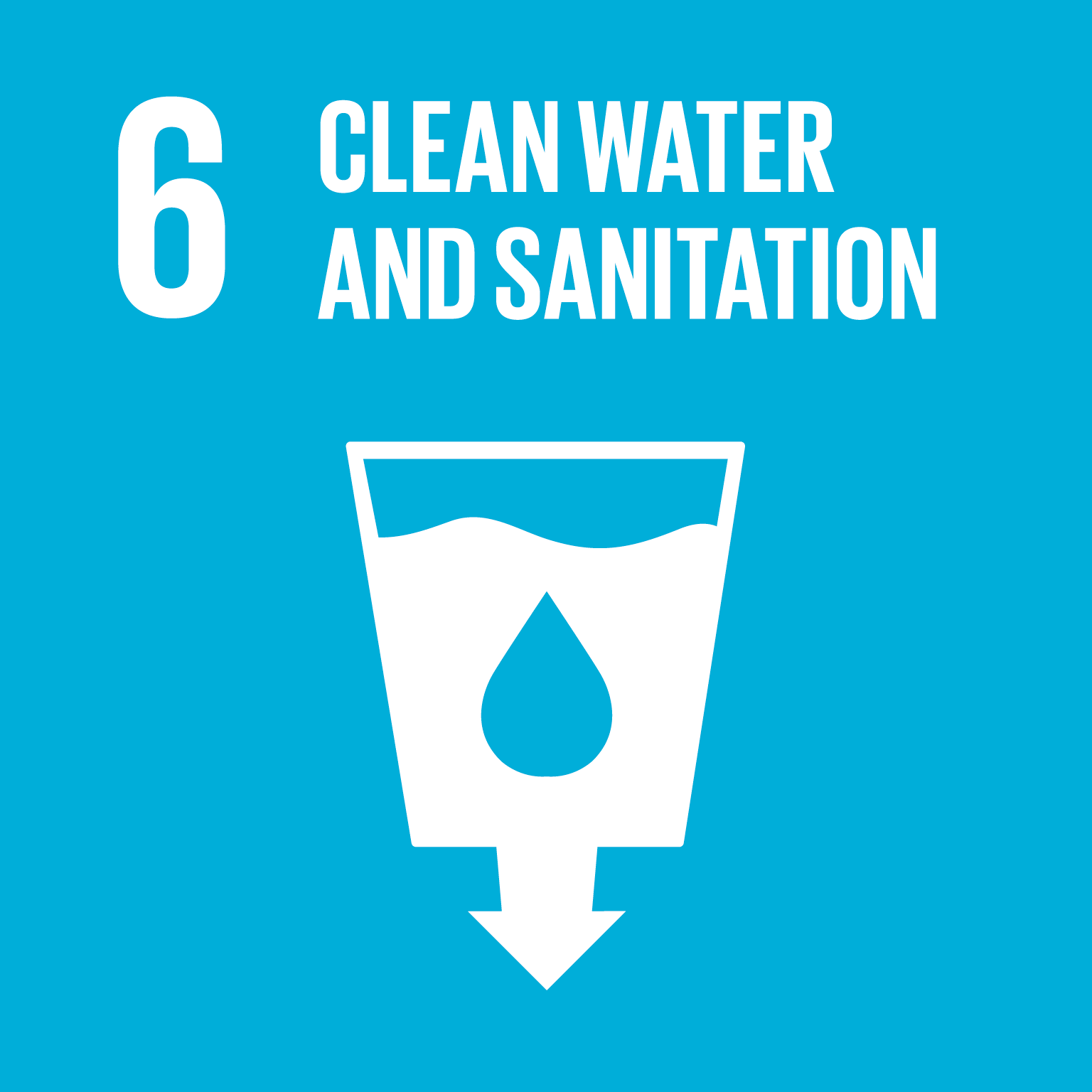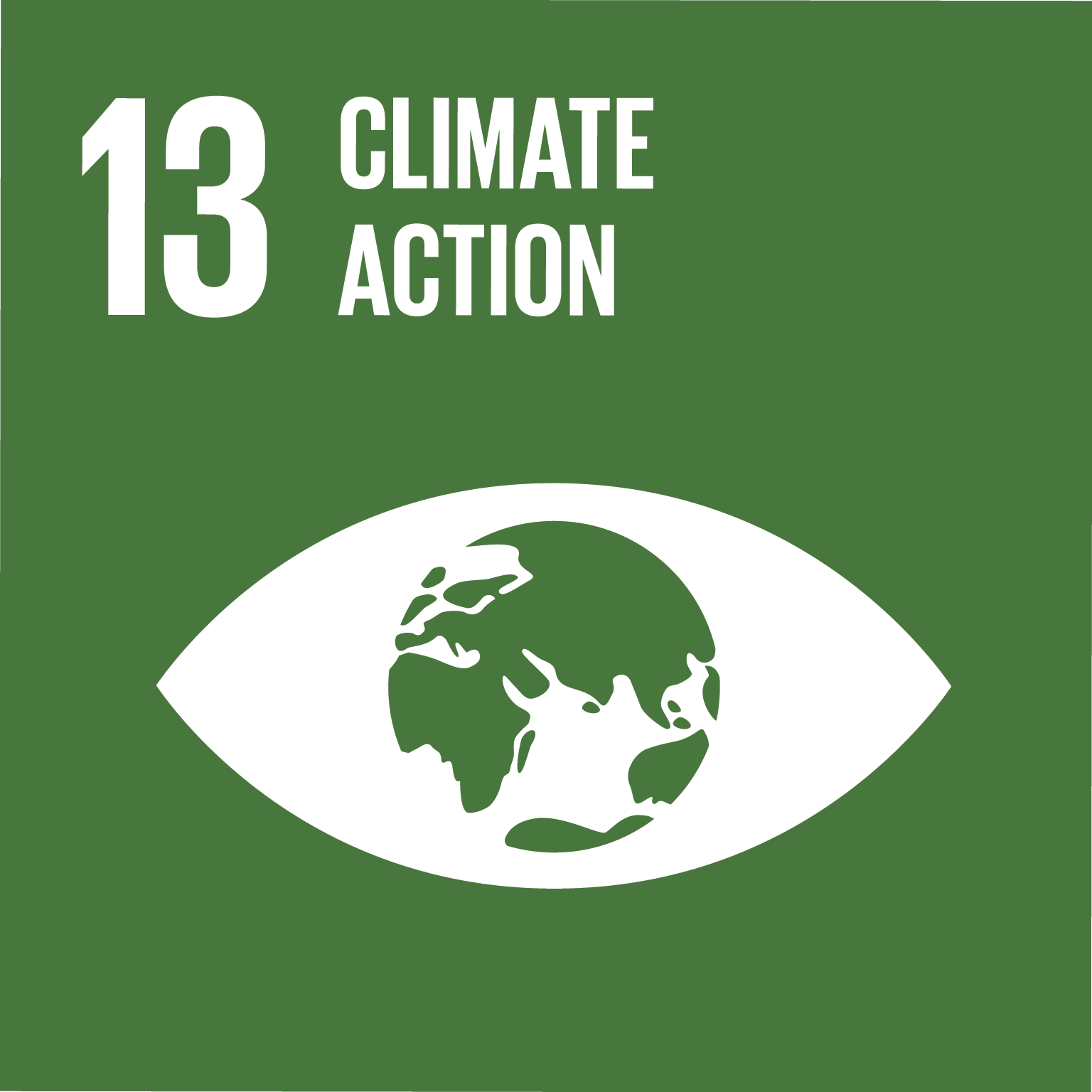+10M
Population equivalent
CLEAN WATER AND SANITATION
Ensure access to water and sanitation for all
Over 2,000 million people in the world live without access to a basic drinking water service, and 3,6 billionhave no access to a basic sanitation service, resulting in avoidable deaths, chronic disease, fewer hours of education and low productivity.
ACCIONA has positioned itself as a key player in the water treatment sector. Its innovative management seeks to resolve the challenges with respect to the shortage of water resources.
CLIMATE ACTION
Take urgent action to combat climate change and its impacts
The generation and use of energy accounts for 35 % of total greenhouse gas emissions in the world. This activity is the largest contributor to global warming. Investment in renewable energy, energy efficiency and other low-carbon technologies will continue to be essential to meet the emerging needs of humanity and to minimize their negative impact on the environment.
ACCIONA considers the fight against climate change and its effects to be a strategic priority. The company works to mitigate greenhouse gas emissions in order to contribute to the progress of society and respond to the main challenges of sustainable development in the areas of infrastructure, water and energy, leading the transition to a low-carbon economy.
The Atotonilco WWTP has a nominal average treatment capacity of 35m3 per second and a maximum treatment capacity of 50m3 per second, including the final disposal of all solid waste and sludge generated. The plant is also be equipped with a cogeneration system to take advantage of the biogas produced in the digester for maximum energy saving.
The plant was designed for a maximum flow rate of 50 m3 per second during the rainy season, with its average flow rate of 42 m3 per second during the rainy season, and for 35 m3 per second during the low flow season, representing an average flow rate of 3,628,800 m3 per day and 3,024,000 m3 per day during each of the stated periods. It can treat wastewater from a population equivalent to 12,600,000 of Mexico City's inhabitants.
The plant was designed with two treatment lines in order to be able to treat water during both the low flow and rainy seasons. It has a physico-chemical treatment line for treating an average flow rate of 14.4 m3 per second during the rainy season and a conventional biological treatment line for treating an average flow rate of 27.6 m3 per second.
General Information
- Location: Atotonilco, Hidalgo (Mexico)
- Capacity: 35 m3 per second and a maximum treatment capacity of 50 m3 per second
- Type of contract: D&C and O&M
- Equivalent population: Over 10.5 million people
Social Initiatives
These improvement initiatives have been called "Value Engineering", which pursue the social benefit of the surrounding population.
The social benefits realised are:
- Improvement of the social welfare of vulnerable groups through the following initiatives:
- Delivery of sludge produced at the WWTP to farmers so that they can fertilise their fields.
- Donation of desks, trafitambos, PET, among others, to primary schools in the communities affected by the project. - Protection and restoration of places of cultural interest, such as the castle of San Antonio.
- Improvement of infrastructures by preventing the circulation of 20,000-litre tanker trucks (pipes in Mexico) loaded with Cl3Fe through the streets of the urban centres near the WWTP, with the construction of a subway.
- Fragmentation and hauling of stone inside the kindergarten and improvement of the facilities.
- Topographical survey of the civic square.
- Laying of tiles, painting and restoration of lighting in the secondary school computer room, El Salto.
- Construction of multi-purpose hall.
- Ripping works, land clearing, use of streets and drainage works.
- Restoration of a school computer room and remodelling of the garden.
- Training of employees through the preparation and presentation of 8 workers to take the exam to accredit higher secondary education.
- Health promotion through eye care days.
- Protection/restoration of places of natural interest for the community (environment), through the planting, donation and reforestation of trees.
- Participation in environmental fairs.
Management of environmental impact
Relocation of plant species
Associated with the project, a plan has been developed for the relocation of species of flora that were affected by the project site, many of them cacti of high environmental value.
These species were recovered and moved with different techniques and distributed in natural and garden areas.
In addition, some specimens were taken to a nursery that was created to house the flora rescued from the spaces affected by the project, also aiming at the production of native flora, including cacti.
Workers belonging to the local communities were trained, with the aim of converting this nursery at the end of the project into a production unit that has all the permits and is managed by the community. In this way, they will be able to produce and market these species, allowing for the economic development of the area and a new productive activity linked, in this case, to the environment and biodiversity.
Technology and innovation
DECLAMER®
ACCIONA developed a lamellar settling device with sludge recirculation in a contact turbine (DECLAMER®), which can provide high settling yields due to the formation of the right size and weight of flocs.
The settled sludge is concentrated using a centrally driven sludge scraper, fitted with thickening rods. The synergy deriving from suitable flocculation, along with a calculated percentage of recirculated sludge, applied with an adjustable speed contact turbine and lamellar settling with lamellas selected for each specific case, means that the solution can be adapted to the specific pollutant requiring removal, aiming for the best possible performance.
VR EXPERIENCE TO ATOTONILCO WWTP
At ACCIONA we are committed to innovation and we use new digital tools to communicate our projects. We take you to our facilities and show you how we care for and manage water in a sustainable way, to guarantee access to this fundamental resource in any part of the world. Discover the process that wastewater follows to be treated and the operation of one of the largest wastewater treatment facilities in the world.
Key figures
+12M
equivalent inhabitants
+3M
m3/per day
22
years of D&C and O&M contract
80.000
hectares reused to irrigate
560M
€ of total investment

